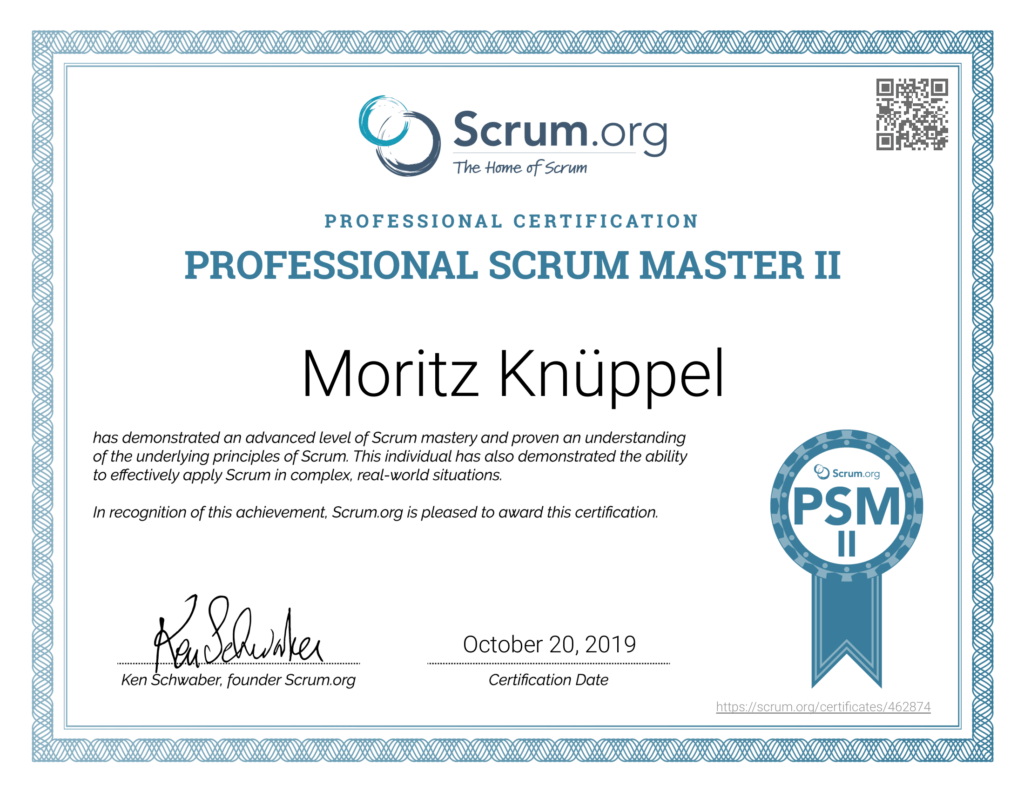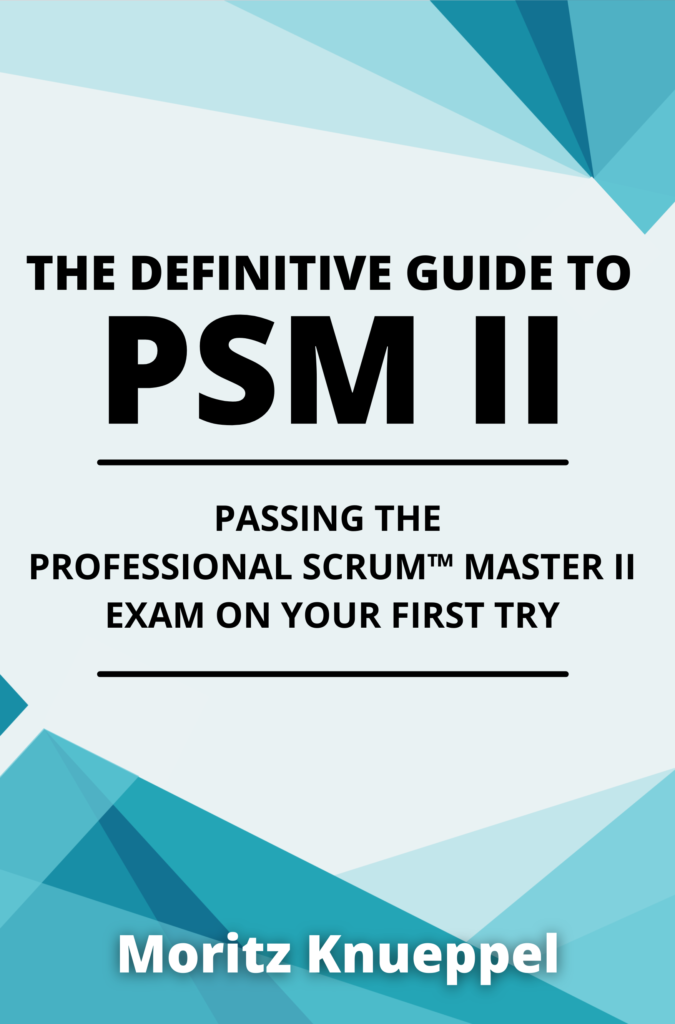PSM II
The Professional Scrum Master II certification, commonly known as PSM II, is considered Scrum.org’s advanced level Scrum Master certification.
Those awarded with it are certified:
- an advanced level of Scrum Mastery
- an understanding of the underlying principles of Scrum
- an understanding of the application of Scrum in complex situations

Basic info
- Duration: 90 minutes
- Questions: 30; multiple-choice, multi-select, true/false
- Passing score: 85%
- Number of certification holders: 8,000+
ABOUT THE QUESTIONS
While in PSM I, the questions were mostly dealing with direct facts from the Scrum Guide, in PSM II, the question revolve mainly around the application fo Scrum principles to case studies: they describe situations and ask you to identify where the problem likely has its roots and/or what the best approach to solving this is by applying Scrum principles.
The key areas that are addressed by the questions are:
- the Scrum roles and in particular their respective boundaries of responsibilities
- self-organization, both of the Scrum Team as well as of the Development Team
- empiricism
- the Scrum Values
- the Definition of Done
- the role of the Scrum Master as a servant-leader
Most of the questions with multi-select options, i.e. those where many answers are correct, will inform you how many answers to select, for example stating (choose the best three answers). There are, however, also a few questions asking you to “(choose all that apply)”.
HOW TO PREPARE FOR PSM II
PSM II is an advanced exam and while it can be passed well without attending a dedicated PSM II training session, such a session may be helpful in getting a more well-connected overview of the Scrum framework. It will also allow you to revisit the different aspects of the role of the Scrum Master.
Read the Scrum Guide multiple times until you are comfortable with its terminology and the concepts it describes. Special focus should be placed on the sections concerning the topics listed above. For a comprehensive analysis of the Scrum Guide, read The Scrum Guide Explained.
To understand the role of the Scrum Master more thoroughly, especially regarding what is and is not their job with regard to their fellow team members, it is useful to review my book The Definitive Guide to PSM II. It looks at all elements of the Scrum framework with particular emphasis on the accountabilities and stances of a Scrum Master.
Use the practice quiz provided below.
